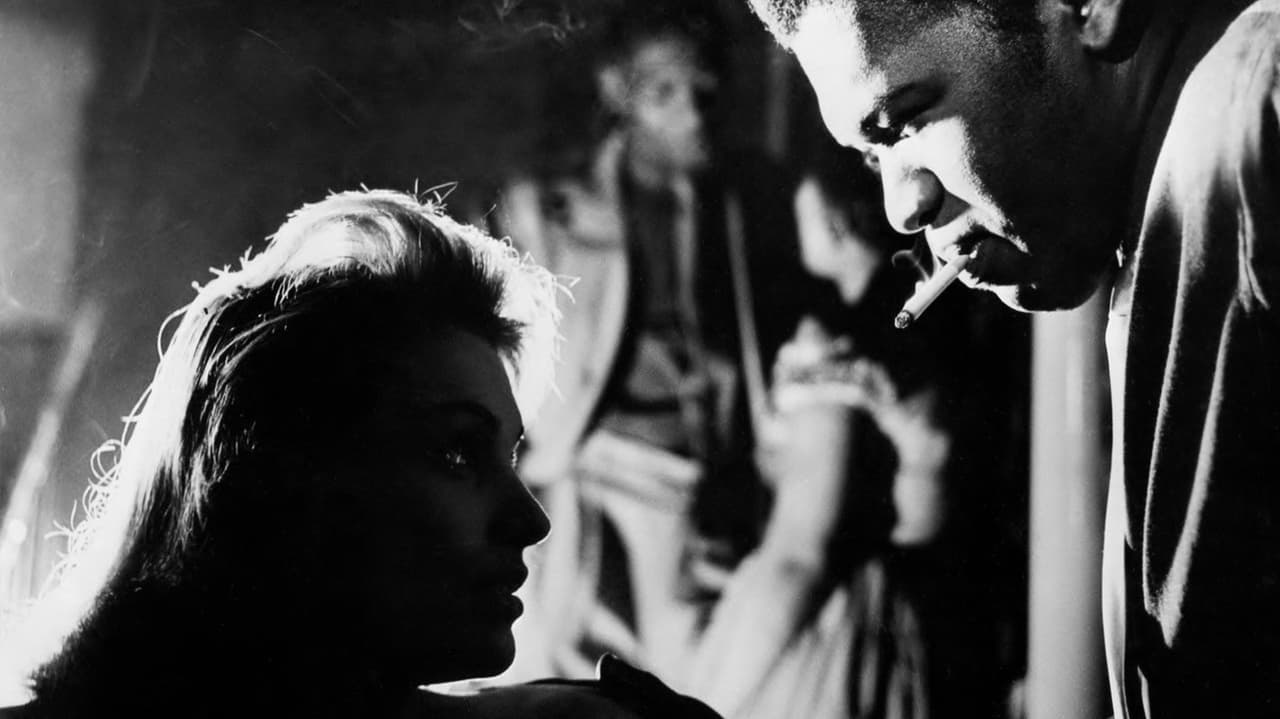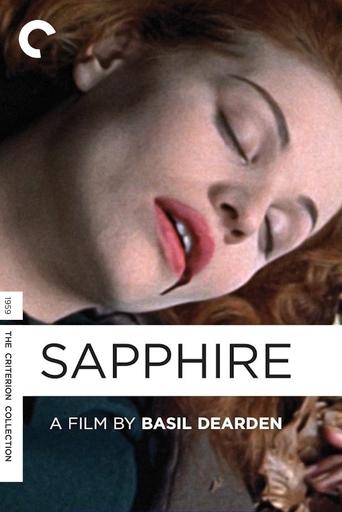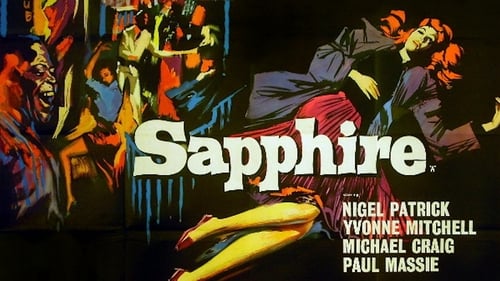


I like the storyline of this show,it attract me so much
... View MoreOne of the best films i have seen
... View MoreClever, believable, and super fun to watch. It totally has replay value.
... View MoreBlistering performances.
... View More"Sapphire" is not "black" but a white woman of mixed ancestry. Claiming that a person who is physically white is really "black" is the equivalent of saying that black ancestry is super-inferior. Morally, it's no different from calling a Jew a "non-Aryan." I found the film to be racist and insulting, an ode to the myth of white racial "purity." I had the impression that the film makers were telling the audience that Sapphire and her unborn child had to die in order to prevent her from destroying alleged white racial "purity" by marrying a "pure" white guy. I also found it significant that Sapphire's "pure" white fiancé was such a weakling. The film makers seemed to be implying that the "tainted" Sapphire was too inferior to attract anyone but an "inferior" white man. The fact that the "hero" detectives are constantly denouncing Sapphire as "coloured" and proclaiming her unfit to be "white" tells you about the racism that seemed to motivate the people who produced this film.
... View MoreSo far during this year's Black History Month, I've been reviewing American films. What I'm commenting on now took place and was filmed in Britain. In this one, a Sapphire Robbins (Yvonne Buckingham) is found dead at Hampstead Heath. Superintendent Robert Hazard (Nigel Patrick) and partner Inspector Phil Learoyd (Michael Craig) investigate who done it. Her boyfriend David Harris (Paul Massie) and brother, a Dr. Robbins (Earl Cameron) are also interested though the former has his own secrets to hide along with his sister Mildred (Yvonne Mitchell) and possibly their parents (Bernard Miles and Olga Lindo). By the way, since the doctor has dark skin and his late sister is light, there's also a racial aspect involved...When I first watched this on American Movie Classics back in the mid '80s (by the way, this was the first I actually watched on that channel), it was intriguing enough for me that I would have loved to have seen it again much sooner than just now on YouTube if I had the chance. Now that I indeed have, it's even more compelling as both a mystery and pretty intense drama on the social tensions that I'm sure were very prevalent during that time in England. Especially considering the way characters of both races reveal their prejudices in both subtle and blatant ways. And besides Cameron, other people of color worth noting that appeared here include Gordon Heath as Paul Slade, Harry Gaird as Johnnie Fiddle (who is identified among other Johnnys at a bar), Orlando Martins as a barman, and Robert Adams as Horace Big Cigar. Really, this was a fine British drama that greatly tackled the way prejudices of most kinds were displayed there. P.S. I didn't know about the stereotype of cops having big feet there. Sure beats the one about donuts here!
... View MoreA very brave movie shot barely a year after the quite shocking interracial violence in Notting Hill,"Sapphire" gives a true picture of the prejudices and ignorance on both sides of the racial divide. The casual racism of both communities may be horrific to 21st century audiences.The very fact that the cinema was allowed to portray such attitudes graphically illustrates how much freedom was given to art in the so - called "repressed" 1950s,in contrast to how proscribed it has become in this the first decade of these "enlightened" times. As usual,the police - merely of course a microcosm of society - get some stick for reflecting the views of the community they come from. Sapphire is a pale - skinned West Indian girl "Passing for white",or a "Lilyskin" as she is referred to in this film. Nowadays the term "Coconut" might be used in an equally abusive sense.The film begins with the the discovery of her body.The police are convinced that the solution to her murder lies within the black community,and,once this idea has taken root,are unable to see the case in any other light,adopting a kind of tunnel vision where they tailor the facts to fit their theories, a situation that prevails in many investigations to this day and has - in the past - led to several miscarriages of justice.Fortunately they do eventually switch tack and find the murderer amongst Sapphire's white fiancé's family.Mr M.Craig proved in this and the later "Life for Ruth",that he was a lot more than a lightweight second - string.He keeps a lid on his more overt racism under the more sophisticated eye of his superior(the versatile Mr N.Patrick) who moves carefully between the outraged blacks and the outraged whites,well aware of the tightrope he is walking. At the core of the film is the perceived suspicion of the whites at the myth of Black Sexuality.Hands may now be raised in horror that such stereotypical beliefs but it would be idle to deny their existence. Many years ago when I was in the Met I had ,as a partner,a very sharp and beautiful black woman.One night - one of many spent de - stressing in an East London pub - I,rather the worst I fear,for drink,pushed a fifth or sixth vodka in front of her and ventured,"Well Marlene,what do you think about The Myth of Black Sexuality?"She fixed me with a sardonic eye and said straight - faced,"What myth?". So it would appear to be a matter of embarrassment to some and pride to others . It certainly caused the unfortunate Sapphire to be murdered,and nearly half a century later,is still the cause of discomfort and suspicion between the races.The only difference in that respect between now and 1959 is that debate on the matter is not encouraged.
... View MoreI was amazed by the shocking brutality of the racism in this film. In America, we are rarely presented with such casual racism; in films of the 50s, race is practically never dealt with in films, as Todd Haynes "remake" of Douglas Sirk's All That Heaven Allows tries to make up for. And current films about the 50s present such two dimensional characters that it is easy to tell the racist villains from the open-minded heroes. In Sapphire, filmed in Britain in the 1950s, one of the most interesting characters is Michael Craig's detective, supposedly our hero, but constantly making racist remarks. His comments are always countered by the more reasonable older inspector, but this allows his gradual transformation throughout the film. Although some of the film is a bit heavy-handed, ultimately the message is sadly still relevant. 4 out of 5.
... View More